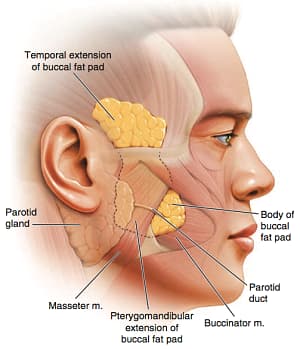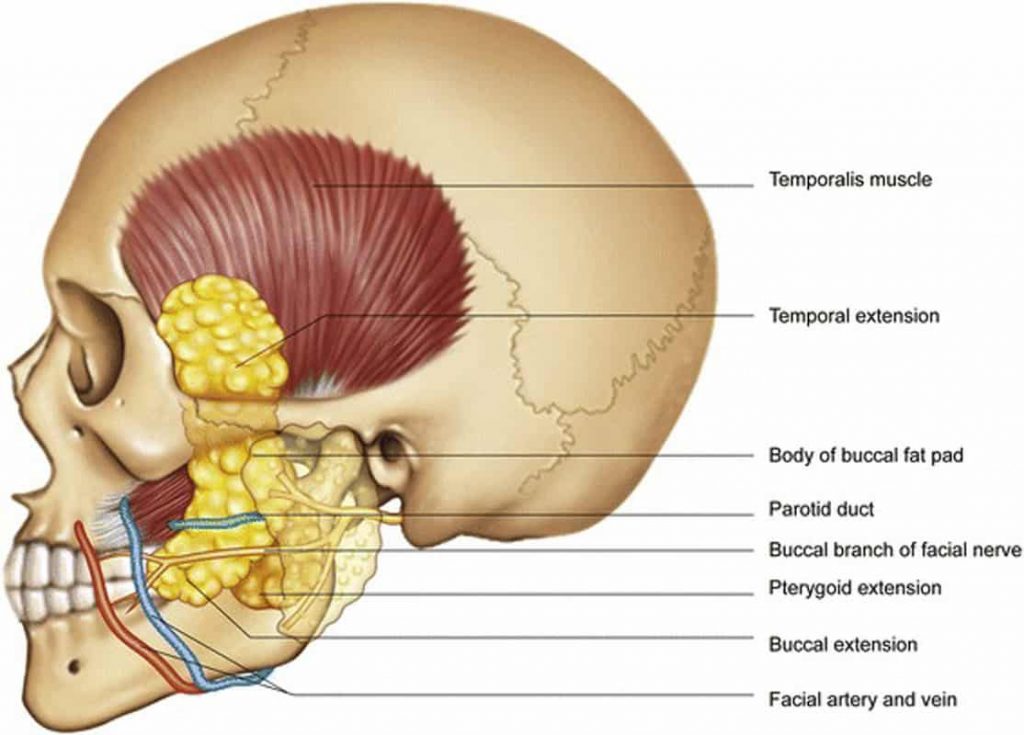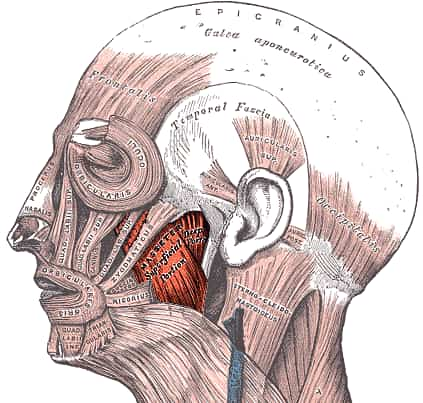What Is Bichectomy Surgery And How Is It Done?
Bichectomy, which can also be defined as cheek aesthetics, is a type of aesthetic operation performed by removing cheek fat to give the facial features a sharper appearance.
Hollywood cheek and bichectomy are terms that are sometimes used interchangeably.
Bichectomy operation can be considered as a part of Hollywood cheek aesthetic operations.
On the Hollywood cheek, other structures forming the contours of the face are also intervened and it is aimed to provide a higher level of change compared to bichectomy.
Also known as the youth triangle, the disproportionate appearance of the facial lines is removed thanks to the bichectomy operation, which aims to obtain an inverted triangle face shape between the cheekbones and the chin.
Facial features are sharpened with bichectomy surgery, which is performed to capture the golden ratio. In this way, the person’s face gets a more aesthetic, attractive, and youthful appearance.
Bichectomy, which is a method frequently applied by those who want to obtain a V-type face, is often preferred by people with square and U-type faces.
In bichectomy surgery, also known as cheek thinning surgery, buccal adipose tissue on the cheeks is thinned by aesthetic surgery methods.
The procedure, which is performed by making an incision of approximately 1 cm from the inside of the cheek, takes about half an hour, and since the intervention is performed from the inside of the cheek, there is no incision mark on the skin surface.
What Will We Learn?
What is a Bichectomy?
Bichectomy, which is one of the aesthetic operations frequently applied by those who want to achieve an ideal facial appearance, is applied to make the facial features proportional.
In some cases, even if the person is at the ideal weight, they may appear overweight due to the fat ratio in the existing facial structure.
The fat tissue in the middle of the cheeks is called the buccal fat pad.

This adipose tissue, located between the facial muscles, is anatomically located in the lower region of the cheekbones and is thought to contribute to sucking functions in infants.
The size of this fat tissue is one of the factors affecting the size of the face.
Buccal adipose tissue generally tends to decrease with aging.
Buccal adipose tissue is one of the important elements of facial aesthetics.
After the growth of this tissue, complaints such as rounding of the facial features, drooping of the cheeks or the appearance of a babyface may occur.
Removal of adipose tissue in the cheeks, in other words, “partial buccal lipectomy” is considered an important surgical intervention for facial features and aesthetics.
The tissue defined as buccal adipose tissue may be excessive due to structural or aging.
Fat pads in the cheeks, which lead to the appearance of chubby cheeks, can cause the person to look older or overweight.
With bichectomy, which is frequently applied by those who want to have a sharp face appearance in triangular form, facial features can be thinned thanks to the adipose tissue taken from an incision of approximately 1 cm on the inner side of the cheek.
Thanks to the operation, which does not leave any scars on the skin surface, the asymmetrical appearance in the cheek area is also removed.
It is ensured that the facial features of the person are sharpened, and the cheekbones and jawbones become prominent.
Anatomically, the lower facial line is formed by 4 basic structures:
- Buccal adipose tissue
- Masseter muscle
- Mandibula
- Subcutaneous adipose tissue

Thanks to the operation, also known as the youth triangle, based on the golden ratio between these structures, the person will have a more beautiful and youthful appearance.
With the bichectomy operation performed to have a V-type face, the face gets a more proportional appearance.
Removal of buccal adipose tissue can be performed alone or simultaneously with many other plastic surgery procedures:
1. Nose Aesthetics (Rhinoplasty)
Nose aesthetic operations are among the most frequently performed operations among plastic surgery applications.
People can benefit from rhinoplasty applications recommended by physicians if they are found to have difficulty in breathing through the nose due to aesthetic anxiety or trauma and birth defects.
2. Face Lift
Removal of buccal adipose tissue can also be performed during aesthetic surgery procedures that remove the signs of aging in the face and neck area, called facelift.
With aging, the skin and other structures in our body lose their elasticity.
With the face lifting process, the tissues of this area can gain a more tense appearance.
This aesthetic operation includes removing excess skin tissue, smoothing wrinkles and stretching facial tissue.
3. Botox Injections
Botox is injections that are produced by clostridium-type bacteria, usually containing botulinum toxin A, and cause temporary paralysis of the muscles.
Wrinkles caused by paralysis of the muscles can also be removed.
Botox injections applied to the area called the glabella in the middle of the eyebrows and around the eyes cosmetically are applications that can be beneficial in diseases such as overactive bladder, lower extremity spasticity, chronic migraine and excessive sweating.
In the area where Botox is applied, it temporarily blocks the signals coming out of the nerve cells, so as a result of this, the contraction of the muscles in this area is prevented.
Thus, the appearance of wrinkled skin around the eyes and forehead area can be improved.
4. Lip Implants
Lip implants are considered a cosmetic procedure and are used to provide fullness of the lips.
With the help of plastic implants, the lips are supported permanently.
Silicone and expanded polytetrafluoroethylene constitute two types of implant materials.
This procedure is recommended for people who have relatively symmetrical lips, enough lip skin to create post-implant tension, and are aware of the existing cosmetic problem and post-procedure results.
How Is Bichectomy Surgery Done?
Before the cheek aesthetic operation, which is applied for the facial features of the person to have an aesthetic appearance, the person should be examined and the answers to all the questions that remain in his mind should be obtained from the physician.
In addition, it should be learned how to follow the procedure before and after the operation.
During the physical examination, the physician asks the patient to open and close his mouth and performs the examination of the cheek.
It is extremely important to clearly express what kind of appearance is desired during the examination.
In addition, the physician should be informed about the drugs used, and the use of blood thinners before and after the operation should be left under the physician’s control.
It is important that the person is hungry before the operation.
After checking the suitability of blood tests for the operation, the person is taken to the operation.
Local anesthesia is generally used in bichectomy surgery, but if you are going to have different plastic surgery operations simultaneously with the bichectomy operation, general anesthesia can be applied by your doctor.
Under local anesthesia, an incision of approximately 1 cm is made on the inside of the cheek.
The inner cheek fat tissue is reached, and then the predetermined part of this tissue is removed from the cheek tissue.
Then the same process is applied to the other cheek.
At this point, it is extremely important to make both cheeks look symmetrical.
In addition, some of the fat tissue taken or some fillers can be added to this area to make the cheekbones look sharp.
Buccal adipose tissue can be reached through the mouth or over the face.
Reaching the face is usually performed during facelift procedures.
The currently accepted safe method of operation is known as intraoral transport.
After the surgery, the incisions are closed by suturing with soluble suture materials.
Who Is The Bichectomy Procedure Suitable For?
Although bichectomy can be applied to people of all ages and genders, the lower age limit for the operation is considered to be 25.
Before this period, the shape of the cheek and facial features may change, but with the age of 25, the facial features of the person settle and there is no obvious change after this age.
People who have cheek types that are not suitable for their facial features and body structure can also have an aesthetic, sharp and triangular appearance with bichectomy operation.
With the bichectomy performed by targeting the golden ratio, the facial features are made sharper and more prominent.
Bichectomy, which can be applied to men as well as women, is performed by removing less buccal adipose tissue because the fat tissue in men is less than in women.
Several factors may indicate that a person is a good candidate for bichectomy surgery:
- Be physically healthy
- Have a healthy body weight
- A round and full face structure
- Having realistic expectations about the appearance of the cheek after the operation
- Not using tobacco
Bichectomy surgery may not be suitable for everyone.
It is not recommended to do this attempt to people in various situations.
At the beginning of these situations are people whose facial features are naturally thin.
In these people, if the cheek area is thinned by bichectomy operation, the collapse of the cheeks may occur with aging.
It is not recommended to perform bichectomy operations within the scope of facial aesthetics in elderly people.
Since people will already lose their cheek fat tissue with aging, bichectomy may cause other signs of aging, such as jowls, to become evident over time.
What Should Be Considered Before Bichectomy Surgery?
Before operations performed within the scope of aesthetic surgery such as bichectomy, patients should clearly express their expectations and goals for the post-operative period to their physicians.
It is important for them to indicate whether they have any chronic diseases and whether they currently use drugs or food supplements.
Physicians should also be informed about harmful habits such as allergies, previous surgeries, alcohol or tobacco use.
Thanks to this information, physicians can form a preliminary idea of the possible risks and the recovery period, and thus can decide which surgical intervention is most suitable for the individual.
You should not discontinue the medications you regularly use in accordance with personal decisions, unless told by the physicians.
Physicians may be asked to discontinue the medications you use before surgery and some tests.
Plastic surgeons also examine your face during the physical examination and take pictures to plan the operation.

What Should Be Considered After Bichectomy Surgery?
After bichectomy surgery, the person does not need to stay in the hospital.
After a short rest, the patient is discharged and the process of returning to daily life begins.
Depending on the operation, the physician may recommend the use of antibiotics so that the incision in the mouth is not infected.
In addition, the physician informs the patient that oral hygiene should be taken into account in order for the healing process to be fast.
While brushing and mouthwash regularly helps to prevent possible infections, good oral care is among the factors that accelerate the healing process.
After the removal of the buccal adipose tissue, various applications made within the knowledge and recommendation of the physicians can contribute to the recovery period:
- Continuing pressure bandage applications for at least 120 minutes in the post-op period
- Applying cold for 15 minutes approximately every 4 hours for 72 hours post-op
- Avoiding heavy exercises and various physical activities for the first 5 days – 1 week of post-op
In addition to these applications, it is important to eat soft and liquid foods for the period recommended by the physician after the operation and to avoid hard foods that need to be chewed.
Although the incision area heals after about a week after the bichectomy operation, it is normal to have edema and swelling on the face and especially in the cheek area for two to three weeks.
Scar formation is out of the question in bichectomy operations where the surgical intervention is done through the mouth.
Cold applications made to the extent recommended by the physician help to keep the swelling at a low level.
Alcohol and cigarettes should not be consumed during this period.
Blood thinners should not be used as they pose a risk of bleeding.
Since the post-operative effects of herbal teas are not known, it is recommended not to be consumed.
It should not be forgotten that paying attention to the recommendations of the physician during the recovery period will accelerate the healing process.
Since the fat tissue in the cheek is removed with bichectomy surgery, the procedure is permanent.
Even if the person gains weight, fat tissue does not accumulate in the cheek area as much as before, so the triangular face appearance does not disappear.
You can also read our helpful article for diabetics.
What Are The Advantages Of Bichectomy?
The benefits of bichectomy compared to other types of operations can be listed as follows:
- The procedure time is short and does not require hospitalization.
- Since it is performed under local anesthesia, anesthesia-related symptoms such as nausea are not observed after the operation.
- Facial features that people with round and plump facial features cannot achieve with diet and sports can be achieved in a short time.
- It provides a more effective and smoother appearance since there is no filling and prosthesis application.
- Since the fat tissue in the cheek is removed, weight gain does not cause the facial features to return to their original form.
- The recovery period after the operation is fast. Since there is no incision on the skin surface, it does not cause an aesthetic problem.
What Are The Disadvantages Of Bichectomy?
Bichectomy surgery is a surgical procedure that is generally considered safe.
However, as in any operation, there is a risk of bleeding and infection in bichectomy.
Although rare, an asymmetrical appearance may occur between the cheeks depending on the difference in the amount of fat removed.
Other disadvantages and possible complications of bichectomy operation are listed below:
- Excessive bleeding
- Infection
- The body’s response to anesthesia
- Hematoma
- Restriction of mouth opening
- Subcutaneous water collection
- Salivary gland damage
- Facial nerve damage
Bichectomy operation, which aims to reconstruct the aesthetic lines of the face by removing the fat tissue under the cheekbone, is a very popular subject.
It is extremely important that aesthetic operations are performed by expert hands and in hygienic environments in order to prevent the above-mentioned and other complications that may occur in bichectomy surgery.
If you are also considering a bichectomy operation, make sure that the appropriate environment is provided to eliminate possible complications that may occur during the operation.
